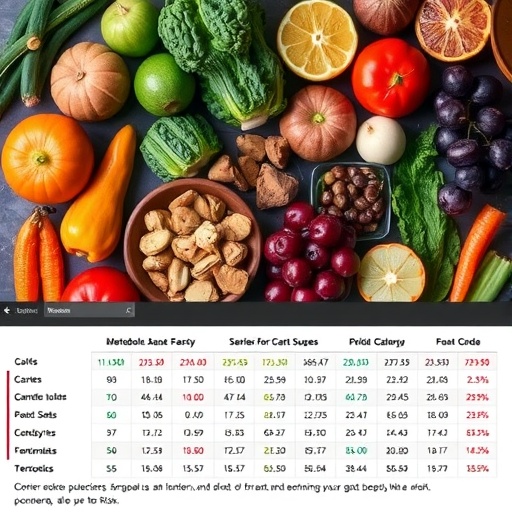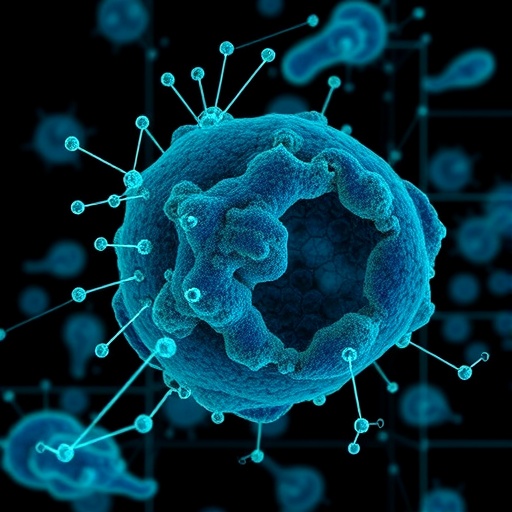Breast cancer continues to hold its grim status as the most frequently diagnosed cancer among women worldwide and the foremost cause of cancer-related mortality within this population. Despite extensive research identifying numerous risk factors, including genetic predispositions and lifestyle choices, the global incidence rates of breast cancer persist in climbing. This paradox has catalyzed a shift in investigative focus toward more intricate biological signatures, aiming to uncover hidden contributors to disease risk. Among the most promising frontiers in this endeavor is metabolomics, the comprehensive analysis of small molecules—metabolites—in biological specimens. Metabolomics offers a dynamic snapshot of biochemical processes, integrating genetic, environmental, and lifestyle influences, and thus holds vast potential for revealing novel biomarkers linked to breast cancer susceptibility.
A groundbreaking study conducted at Columbia University’s Mailman School of Public Health has recently harnessed metabolomics to deepen our understanding of breast cancer risk factors. This research employed a metabolome-wide association study (MWAS) framework, analyzing plasma samples from participants enrolled in the New York branch of the Breast Cancer Family Registry (BCFR). The study’s participants included 40 women who developed breast cancer during follow-up and 70 age-matched controls who remained cancer-free. Importantly, the cohort largely consisted of women with a known family history of breast or ovarian cancer, a subgroup characterized by an elevated risk—estimated to be two to four times greater than that of the general population.
Central to this investigation was the longitudinal design, with a median follow-up period exceeding six years. This temporal scope allowed researchers to capture metabolomic profiles prior to cancer diagnosis, thereby enhancing the study’s capacity to identify metabolites predictive of future disease development rather than merely reflective of existing pathology. The participants were predominantly premenopausal at enrollment, and the mean ages of cases and controls were closely matched, approximately 45 and 46 years respectively. Such demographic alignment bolsters confidence that observed metabolomic differences are not confounded by age-related metabolic variation.
The study uncovered eight distinct metabolic features significantly correlated with breast cancer risk. These metabolites included four compounds inversely associated with risk, suggesting a protective or resilience function, while the remaining four demonstrated positive associations, indicating potential roles as risk enhancers or biomarkers of pathogenic processes. Significantly, one of the identified metabolites was 1,3-dibutyl-1-nitrosourea, a chemical agent historically utilized in oncological research due to its mammary tumor-inducing properties in animal models. This finding marks the first direct human evidence implicating this compound in breast cancer susceptibility, illuminating a possible environmental or exogenous contributor to disease etiology.
Moreover, the study spotlighted metabolomic alterations linked to dietary and lifestyle factors, underscoring the intricate interplay between external exposures and endogenous biochemical pathways. The role of caffeine-related metabolites emerged as a particularly intriguing area, given the longstanding ambiguity around caffeine’s impact on breast cancer risk. These metabolomic signatures may represent intermediaries that bridge lifestyle habits with molecular carcinogenesis, thereby providing fresh insight into modifiable risk factors.
Equally pivotal was the demonstration that integrating these novel metabolic markers into conventional risk prediction models substantially heightens their accuracy. Utilizing established algorithms such as those based on age and the Breast and Ovarian Analysis of Disease Incidence and Carrier Estimation Algorithm (BOADICEA) score, the incorporation of metabolomic data boosted predictive accuracy from 66% to an impressive 83%. This leap not only underscores the added value of metabolomics but also heralds a transformative shift in personalized breast cancer risk assessment that could revolutionize screening and prevention strategies.
The technical approach behind this study involved high-resolution mass spectrometry for metabolite quantification and sophisticated bioinformatics for metabolome-wide association analyses. This enabled the identification and validation of metabolic signatures with robustness against confounding variables. The use of a carefully curated cohort from the BCFR, with rigorous pathology confirmation and longitudinal follow-up, further strengthens the validity of these findings.
From an environmental health perspective, the identification of metabolites like 1,3-dibutyl-1-nitrosourea invites renewed scrutiny of chemical exposures in everyday life and their insidious roles in carcinogenesis. Such insights could catalyze targeted public health interventions aimed at mitigating exposure to harmful compounds. Concurrently, the metabolic footprints tied to diet and lifestyle emphasize the need for comprehensive biomarker-driven studies that unpack how everyday habits translate into molecular risk profiles, paving the way for refined guidance and behavioral modifications.
The research team, led by DrPH candidate Hui-Chen Wu and senior author Mary Beth Terry, PhD, emphasizes the necessity of replication studies with larger cohorts to validate and extend these findings. Given the sample size constraints of the current analysis, further work is indispensable to confirm the universality and mechanistic underpinnings of these metabolomic predictors. Nonetheless, this study establishes a compelling proof of concept for employing targeted, quantitative metabolomics as a tool in breast cancer risk stratification.
Crucially, this advancement reflects a broader trend within oncology toward precision prevention, where molecularly informed assessments guide individualized risk mitigation strategies. As metabolomics technologies evolve and become increasingly accessible, their integration into epidemiologic and clinical frameworks stands to fundamentally reshape how breast cancer risk is understood, predicted, and ultimately diminished.
The implications of this research extend beyond breast cancer to the wider field of cancer epidemiology, demonstrating how multi-omics approaches can unearth hidden layers of the exposome and host interactions. By revealing novel biomarkers linked to environmental and lifestyle factors, metabolomics paves the way for more holistic models of disease etiology that transcend traditional genetic paradigms.
In summary, the Columbia University study represents a landmark exploration into the metabolomic underpinnings of breast cancer risk. The identification of eight key metabolic features, including a novel connection to a known carcinogenic chemical, advances both scientific understanding and clinical capability. The marked improvement in risk prediction accuracy thanks to metabolomic integration heralds a new era in breast cancer prevention research, one where small molecules offer big clues to combating a disease that continues to challenge global health.
Subject of Research: Breast cancer risk prediction through plasma metabolomics analysis.
Article Title: Plasma metabolomics profiles and breast cancer risk.
News Publication Date: September 22, 2025.
Web References:
http://dx.doi.org/10.1186/s13058-024-01896-5
https://www.mailman.columbia.edu
References:
Wu HC, Terry MB, Lai Y, Liao Y, Deyssenroth M, Miller GW, Santella RM. Plasma metabolomics profiles and breast cancer risk. Breast Cancer Research. 2025. DOI: 10.1186/s13058-024-01896-5.
Keywords: Breast cancer, metabolomics, plasma metabolites, risk prediction, metabolome-wide association, environmental exposures, 1,3-dibutyl-1-nitrosourea, BOADICEA risk score, epidemiology, biomarker discovery.
Tags: biochemical processes in cancerbiomarkers for breast cancerBreast Cancer Family Registry researchbreast cancer risk factorsColumbia University breast cancer studygenetic predispositions in breast cancerhigh-risk women and breast cancerlifestyle influences on breast cancer riskmetabolic markers and cancermetabolome-wide association studymetabolomics in cancer researchplasma samples and metabolomics





